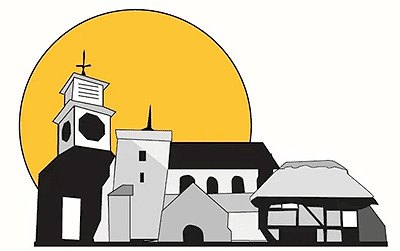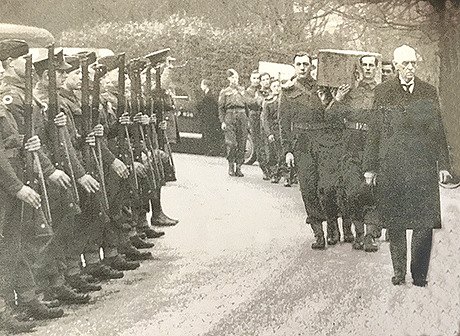
Museum archives: Crash and Controversy!
Crash and Controversy!The noise of the faltering engine must have filled the dark sky above Steyning as the Heinkel Bomber’s pilot struggled at the controls... in vain.
'It was about 8 pm. when the plane crashed in flames near the railway bridge at Wyckham Farm. The following day, among the wreckage, one man was found intact, and the others were unrecognizable.'
The news spread across Steyning and beyond, and as Jean Scragg put it, 'There was a lot of debate as to whether our enemies should be able to have a Christian burial.'
Our vicar at the time, Rev. Cox, was clear in his mind that it was his duty to lay these airmen’s remains to rest, so he began to make arrangements for their Christian burial in our churchyard. However, this controversy grew, and it very quickly appeared in the newspapers.
The Kent and Sussex Courier and The Daily Telegraph took up the tale: 'A number of residents in the Sussex village of Steyning are opposed to the burial of five German airmen in the churchyard. The Nazis were fatally burned when their Heinkel bomber crashed on Sunday night.'
Mr. Holland, a member of the British Legion, said on Tuesday: 'Why should they lie among our loved ones? They came here to wreck our homes and murder our kith and kin.'
The Vicar of Steyning, Rev. E.W. Cox, stated, 'There could be no question that the men should be buried in the churchyard.'
They jointly worded a reply to the Editor of the Daily Telegraph, protesting that: 'We are in close touch with the people of this parish and... apart from what has appeared in the Press, we have not found the slightest suggestion of the existence of any such opposition.'
They also revealed that Mr. Holland, quoted in the article, was not a member of the Steyning British Legion.
This response clearly does not take into account Jean Scragg’s mention of 'debate' across Steyning.
However, perhaps those against the Vicar’s plan to give the airmen a funeral chose not to air their feelings to either the Vicar or the British Legion.
On the day of the funeral of the five Nazi airmen, their remains were placed in two coffins, covered by a swastika flag, on a borrowed gun-carriage with a military guard of honour.

They were led by the Sexton, Charles Woolgar, setting a respectful pace, as shown in the illustration. Onlookers stood along the route, and some followed behind.
As the cortege reached the church, the coffins were lifted onto the shoulders of two British Warrant Officers as a bugler sounded 'the Last Post.'
After the short funeral service, the five airmen were buried in the churchyard, where they remained until the end of the war. At that point, their remains were exhumed and returned to their families in Germany.

